
Find Help
More Items From Ergsy search
-

What is self-testing for eye patients?
Relevance: 100%
-

What types of self-tests are available for eye patients?
Relevance: 88%
-

What are the limitations of self-testing for eyes?
Relevance: 77%
-

How often should I self-test my eyes?
Relevance: 74%
-
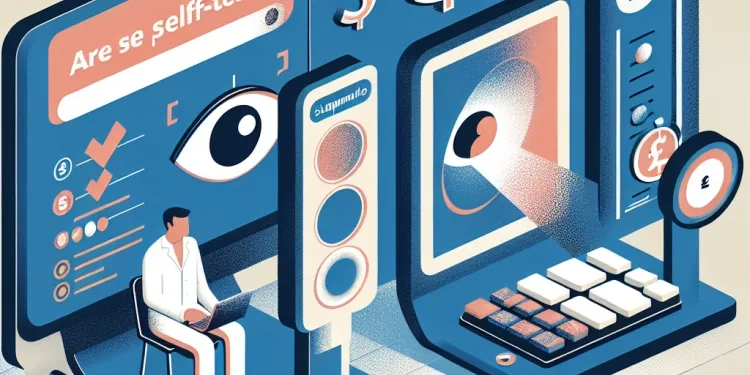
Are self-tests a substitute for professional eye exams?
Relevance: 74%
-
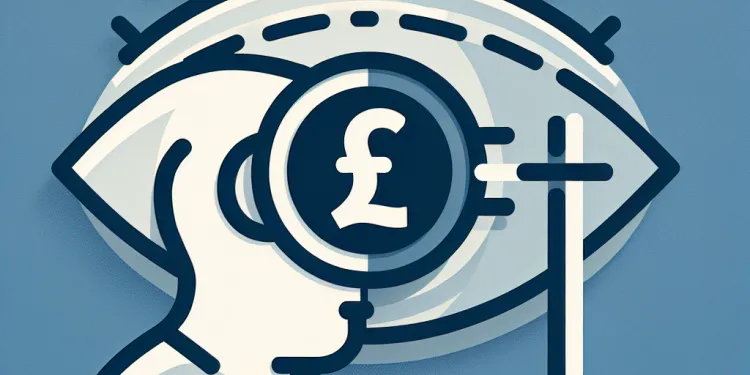
How does self testing for eye patients work?
Relevance: 73%
-

Can self-testing detect all eye conditions?
Relevance: 72%
-

Should I share the results of my self-tests with my eye doctor?
Relevance: 72%
-

Why would someone need to self-test their eyes?
Relevance: 71%
-

Do I need any special equipment for eye self-testing?
Relevance: 71%
-

Are there any self-tests for eye pressure?
Relevance: 63%
-

Can I use a smartphone for self-testing my eyes?
Relevance: 62%
-
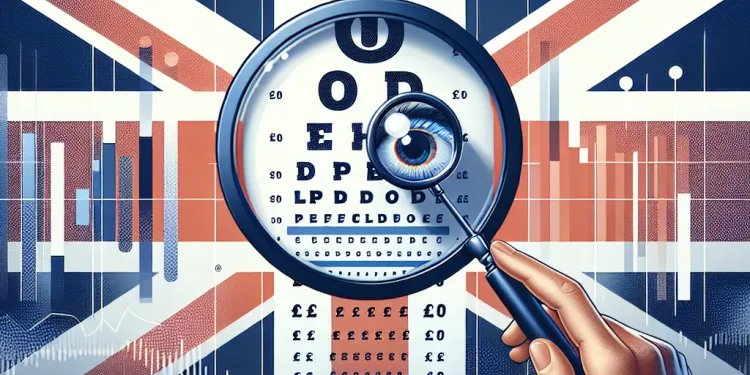
How do I use a vision chart for self-testing?
Relevance: 52%
-

Where can I find reliable self-testing tools for my eyes?
Relevance: 48%
-

Is it possible for self-tests to cause harm?
Relevance: 46%
-

Do insurance plans cover the cost of self-testing tools?
Relevance: 41%
-

What age groups can benefit from self-testing?
Relevance: 41%
-

What should I do if I notice changes during self-testing?
Relevance: 40%
-
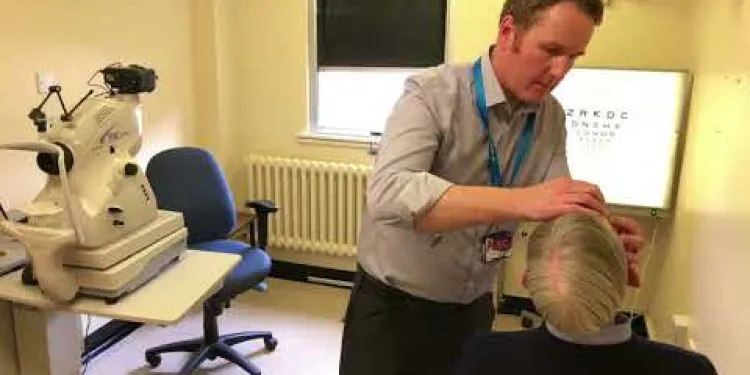
Derbyshire Diabetic Eye Screening - Diabetic Eye Screening
Relevance: 38%
-
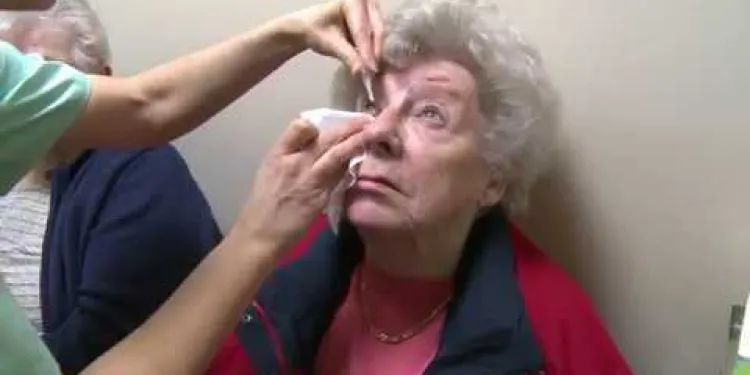
Eye Injections at Royal Bournemouth Hospital
Relevance: 36%
-

Eye Injections at Royal Bournemouth Hospital
Relevance: 36%
-

Thyroid eye disease. Squint surgery - The operation
Relevance: 34%
-

Diabetes Eye Screening
Relevance: 34%
-
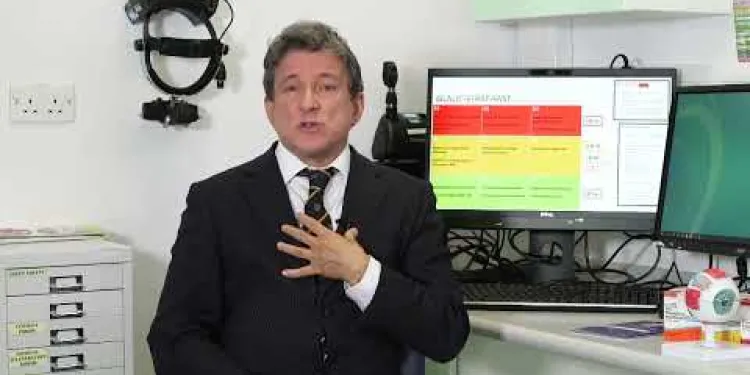
Glaucoma: general side effects of eye drops
Relevance: 33%
-

Can self-testing help me track my prescription changes?
Relevance: 32%
-
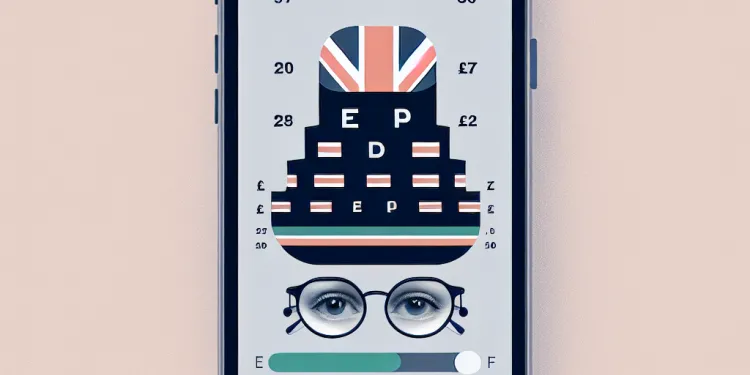
How accurate are app-based eye tests?
Relevance: 32%
-

North Yorkshire Diabetic Eye Screening Programme - A day in the life
Relevance: 31%
-
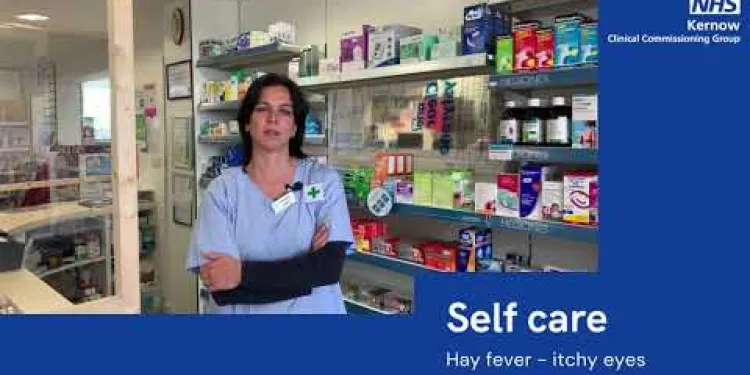
Self care - hay fever itchy eyes
Relevance: 30%
-

Cornea transplant patient Information
Relevance: 30%
-
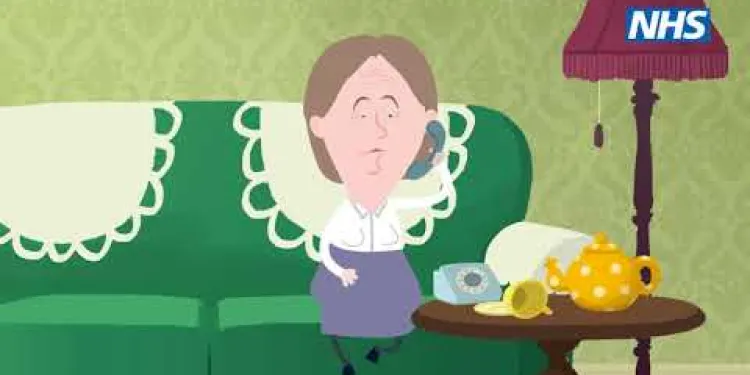
West Midlands LEHN Animated Video on Eye Health
Relevance: 29%
-
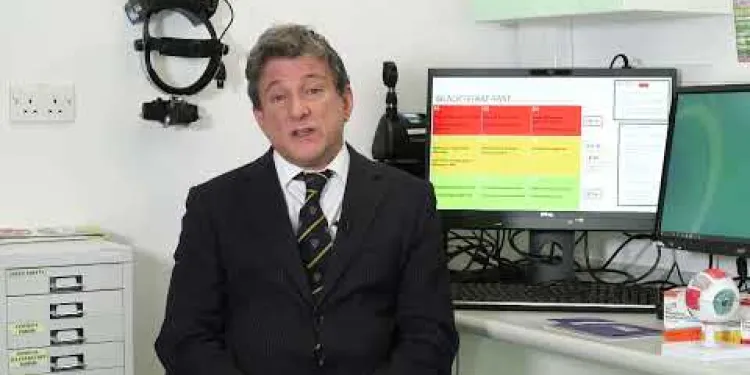
Glaucoma: how often should i take my eye drops?
Relevance: 29%
-
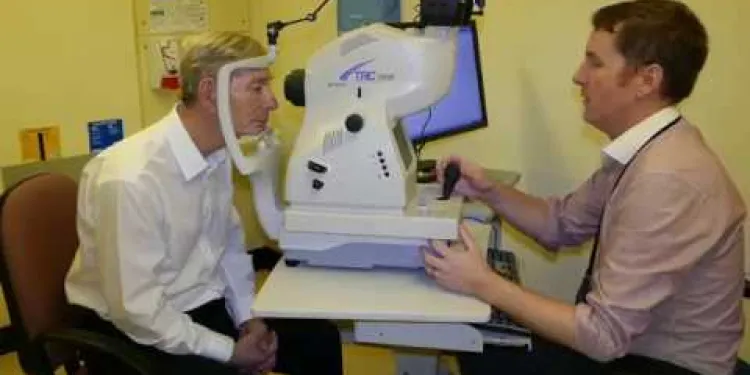
Derbyshire Diabetic Eye Screening - Your Screening Appointment
Relevance: 29%
-
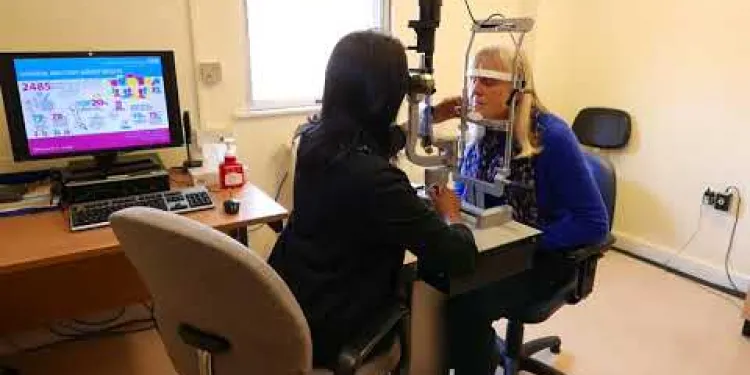
Derbyshire Diabetic Eye Screening - Assessment Clinic Appointment
Relevance: 29%
-
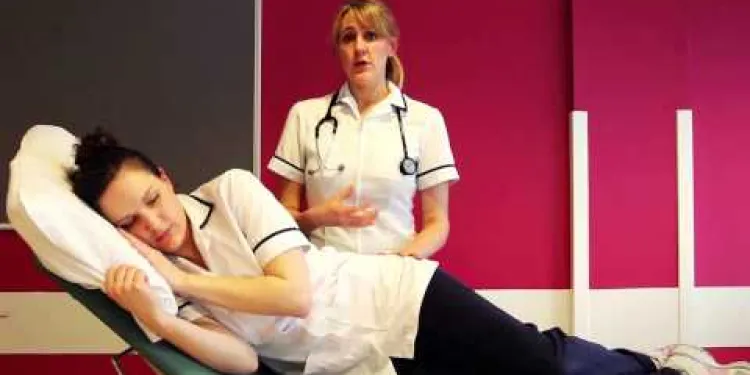
Positioning for Breathless Patient
Relevance: 27%
-

Assessing the stroke patient
Relevance: 26%
-
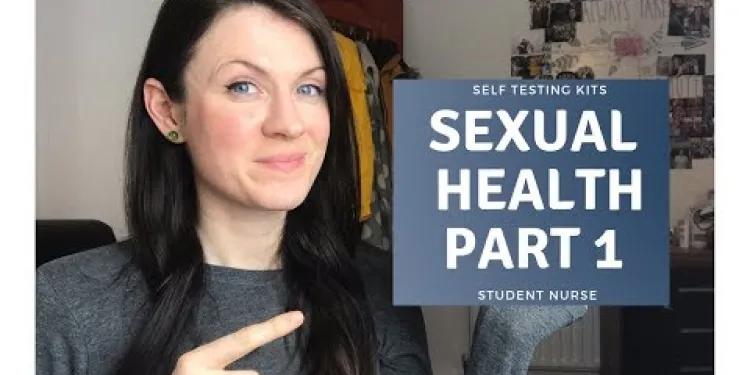
Let's Talk Sexual Health - Home Self Testing Kits
Relevance: 25%
-

Neuroendocrine tumour patient video
Relevance: 24%
-
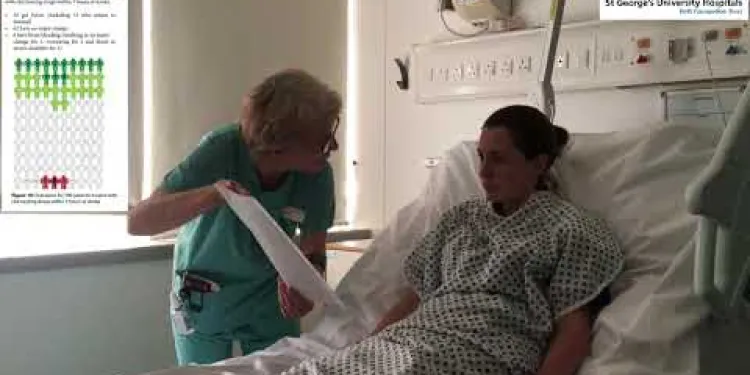
Gaining consent from stroke patients
Relevance: 24%
-

Exercise in patients with a neuropathy
Relevance: 23%
-
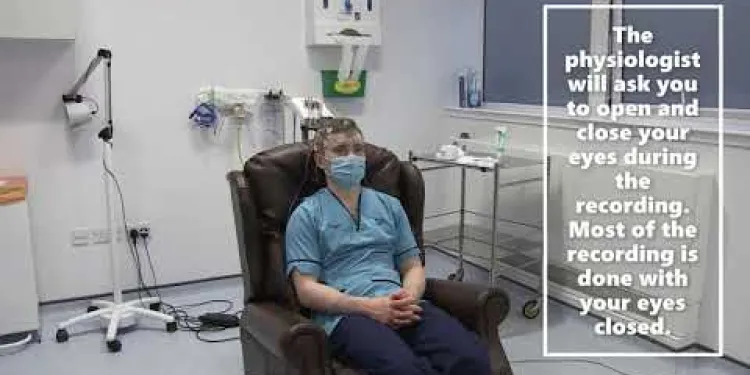
Neurophysiology EEG Patient Information
Relevance: 23%
Introduction to Self-Testing for Eye Patients
Self-testing for eye health is becoming increasingly significant as a complementary measure for maintaining good vision and early detection of potential eye conditions. For individuals in the UK, understanding and utilizing self-testing methods can serve as a proactive approach to eye care in conjunction with regular visits to an eye care professional.
What is Self-Testing for Eye Health?
Self-testing for eye health involves a series of home-based evaluations that individuals can perform to monitor their vision and overall eye health. These tests are generally simple and do not require specialized equipment or extensive time commitments. They are designed to identify potential issues such as visual acuity changes, screen for common vision problems, and provide early warning signs that might necessitate professional evaluation.
Common Self-Testing Methods
There are several popular self-tests that individuals can conduct. One widely known method is the Amsler grid test, which is particularly useful for detecting macular degeneration. It involves staring at a grid of lines to identify any distortions or wavy patterns. Another common method is the use of Snellen charts to check visual acuity, which can help gauge changes in sight over time.
Moreover, individuals can assess their ability to perceive colours accurately, which can be indicative of colour vision deficiencies. These tests are often available online and can be printed for convenience. Additionally, contrast sensitivity checks can help assess the ability to distinguish between different shades and edges, which is crucial for tasks such as night driving.
Benefits of Self-Testing
Self-testing serves multiple benefits for eye patients in the UK. It empowers individuals to actively participate in the management of their eye health and promotes awareness of changes that might otherwise go unnoticed. Early detection through self-tests can facilitate timely intervention, providing better outcomes for conditions that might otherwise progress without noticeable symptoms.
For those with chronic eye conditions, regular self-assessment can be valuable in monitoring disease progression and treatment effectiveness. Self-testing can act as an adjunct to scheduled appointments, helping to alert healthcare providers to any significant changes that require attention.
Limitations and Considerations
While self-testing is beneficial, it cannot replace professional eye examinations. These tests are limited in scope and may not detect all potential issues. Therefore, it's crucial for individuals to maintain regular appointments with eye specialists who can provide comprehensive evaluations and advice.
Furthermore, not all self-tests are appropriate for every individual. People should be mindful of following instructions carefully and seek professional guidance if uncertain about the results or if new symptoms arise.
Conclusion
In summary, self-testing for eye patients in the UK is a practical approach to supplement routine eye care. By regularly conducting simple tests at home, individuals can better monitor their vision, facilitating early detection of potential problems. However, it is essential to view self-testing as an addition to, rather than a substitute for, professional eye examinations.
Introduction to Self-Testing for Eye Patients
Doing simple eye tests at home can help keep your eyes healthy. It can also help find problems early. People in the UK can use these tests along with seeing an eye doctor regularly.
What is Self-Testing for Eye Health?
Self-testing means checking your eyes at home. You can look for changes in how well you see. These tests are easy to do and do not take much time. They help find problems with seeing clearly, seeing colors, and other eye issues.
Common Self-Testing Methods
Here are some tests you can do at home:
1. **Amsler grid test**: Look at a grid of straight lines. Check if any lines look wavy or if there are blank spots. This helps find problems in the center of your eye.
2. **Snellen chart**: This chart has different sizes of letters. It helps you see if your eyesight is getting worse.
You can also check how you see colors and different shades. These tests are often online and can be printed at home.
Benefits of Self-Testing
Self-testing helps you care for your eyes. It helps you notice any changes early. This means you can get help sooner from a doctor. If you have an eye condition, these tests help you see if things are getting better or worse.
Limitations and Considerations
Self-testing is helpful, but it cannot replace seeing an eye doctor. Some eye problems can only be detected by a professional. Keep regular appointments with your eye specialist.
Not all tests are right for everyone. Follow the test instructions carefully. If you are unsure or notice new problems, ask a doctor.
Conclusion
In short, self-testing is a good way to check your eye health at home. It helps find problems early. But remember, it is important to also see your eye doctor for a full check-up.
Frequently Asked Questions
What is self-testing for eye patients?
Self-testing for eye patients refers to various tests that individuals can perform at home to monitor their vision and eye health between regular eye examinations by professionals.
Why is self-testing important for eye patients?
Self-testing can help detect changes in vision or eye conditions early, allowing for timely professional consultation and potentially preventing more serious issues.
What common self-tests can eye patients perform?
Common self-tests include visual acuity tests, Amsler grid tests for macular degeneration, and tests to check peripheral vision.
How often should eye patients perform self-tests?
The frequency of self-testing can vary depending on the individual's health needs, but generally, it's recommended to perform these tests monthly or as advised by an eye care professional.
Can self-testing replace regular eye exams?
No, self-testing cannot replace regular eye exams by a professional. It is a supplementary measure to help monitor eye health between appointments.
What is an Amsler grid test?
The Amsler grid test is used to monitor changes in the central visual field, which can indicate the presence of macular degeneration.
How can I perform a visual acuity test at home?
You can test visual acuity by using a printed eye chart and standing a specific distance away to check how well you can read at different sizes.
What should I do if I notice a change during self-testing?
If you notice any changes, such as blurry vision or blind spots, it's important to contact an eye care professional as soon as possible.
Are there apps available for self-testing?
Yes, there are several smartphone apps designed to help monitor vision and eye health as part of a self-testing routine.
Is self-testing suitable for everyone?
While self-testing can be a useful tool for many, individuals with certain medical conditions or severe vision issues should consult their doctors before relying on self-testing.
What materials are needed for self-testing?
Materials can include an Amsler grid, a printed eye chart, a ruler for measuring distances, and a smartphone app for additional tests.
Can self-testing help detect glaucoma?
Self-testing is not a reliable method for diagnosing glaucoma. Regular professional exams are necessary, though monitoring peripheral vision can be helpful.
What are the limitations of self-testing?
Self-testing can't diagnose conditions or replace a professional examination. It's also limited by the accuracy of home tools and the patient's understanding.
How can one ensure accuracy in self-testing?
Following instructions carefully and using standard tools or apps can help ensure accuracy, but professional exams are always more reliable.
Can children use self-testing for eye health?
Supervised self-testing can be part of monitoring a child's vision development, but it should not replace regular pediatric eye exams.
What role do lifestyle factors play in self-testing results?
Lifestyle factors, such as lighting conditions and screen time, can influence self-testing outcomes and should be considered during testing.
How does an Amsler grid test work?
The Amsler grid test involves looking at a grid of lines and reporting any wavy or missing lines, which may indicate macular problems.
Is it necessary to contact an eye doctor if self-testing results are normal?
Even if self-testing results seem normal, regular check-ups with an eye doctor are important to ensure comprehensive eye health.
Can self-testing detect cataracts?
Self-testing cannot diagnose cataracts. Blurry and clouded vision may indicate cataracts, but a professional examination is needed for diagnosis.
What if self-testing shows differing results across different days?
Fluctuating test results can occur due to various factors. Persistent changes should be evaluated by an eye care professional.
What does it mean to test your own eyes?
Testing your own eyes means checking how well you can see without going to the doctor. It's like a simple eyesight check you do by yourself.
Here are some tools and tips to help with eye testing:
- Use an eye chart. You can find these online or make one at home.
- Look at things that are far away and then close up to see how clear they are.
- Ask someone to help you if you need it.
Remember, if you have trouble seeing, it's important to visit an eye doctor.
Self-testing for eye patients means doing simple eye checks at home. These help you keep an eye on your vision and eye health between visits to the eye doctor.
Why is checking your eyes yourself important?
Checking your eyes at home helps keep them healthy. It's like a quick test you can do.
Here are some reasons why it's important:
- It helps you see if your eyes are getting worse.
- You can tell the doctor if anything is wrong sooner.
- You can take steps to keep your eyes healthy.
Ask someone to help if you find it hard. You can use magnifying glasses or big print. Talking tools can read words out loud.
You can check your own eyes to see if your vision changes or if you have eye problems. This can help you get help from an eye doctor sooner and stop bigger problems before they start.
What easy eye checks can you do at home?
Some easy eye tests you can do at home are:
- Checking how well you can see far away and up close.
- Using a grid of lines to see if they look wavy. This helps to check for eye problems.
- Checking how well you can see to the sides.
Remember to ask a trusted adult or use a magnifying glass if something is hard to read.
How often should people check their eyes at home?
People with eye problems might need to check their eyes at home. They should do this as much as their doctor tells them. It is helpful to always use the same way to check. You can also ask a friend or family member to help.
How often you need to test your eyes can be different for each person. But usually, it's a good idea to check your eyes once a month or follow what your eye doctor tells you.
Can you test your own eyes instead of going to the eye doctor?
No, checking your eyes by yourself can't take the place of going to the eye doctor. It's just a helpful way to keep an eye on your vision between visits to the eye doctor.
What is an Amsler grid test?
An Amsler grid test is a tool that helps check your eyes. It looks like a square with lines that make smaller squares. There is a dot in the middle.
How to use it:
- Cover one eye with your hand.
- Look at the dot in the center with your other eye.
- If the lines look wavy or parts are missing, tell your eye doctor.
This test helps find eye problems like age-related eye changes.
Some helpful things to do:
- Have someone read the instructions to you.
- Use bright light when looking at the grid.
The Amsler grid test helps check your central vision. It shows if there might be a problem like macular degeneration.
How can I check my eyesight at home?
You can check how well you see (eyesight) at home. Here is a simple way to do it:
- Get what you need: You will need an eye chart. You can print one from the internet.
- Find a buddy: Ask someone to help you with the test.
- Measure the distance: Stand about 3 meters (10 feet) away from the chart.
- Cover one eye: Use your hand or a piece of paper to cover one eye.
- Read the chart: Try to read the letters on the chart starting from the top.
- Switch eyes: Now cover the other eye and read the chart again.
If you have trouble seeing the letters, it is a good idea to see an eye doctor for a check-up.
Tools to help you:
- Use a printed eye chart: You can find one online.
- Ask a friend to help you.
Remember:
- Don't test your eyes in a dark room. Make sure it's bright enough to see the chart clearly.
- Wear your glasses or contacts if you have them.
You can check how well you see by using an eye chart. Stand at a set distance and see how well you can read the letters, which get smaller on each line.
What to Do if You See Something Different When You Test Yourself
If you see something new or different when you check yourself, don't worry! Here are some simple steps you can follow:
- Stay Calm: Take a deep breath and try not to get scared.
- Write It Down: Use a notebook or a phone to write what you see.
- Tell Someone You Trust: Talk to a parent, teacher, or friend about your worries.
- Ask for Help: Make an appointment with a doctor to find out more.
Remember, it’s good to pay attention to changes and get help when you need it.
If you notice changes with your eyes, like blurry vision or spots where you can't see, it's important to tell an eye doctor quickly.
Can I find apps to test myself?
Yes, there are phone apps that can help you check your eyes and see how they are doing. You can use these apps to test your eyes at home.
Can everyone do self-testing?
Not everyone can easily do self-tests. Some people might find it hard.
Here are some tips to help:
- Ask a grown-up for help.
- Use clear instructions.
- Take your time and be patient.
Remember, it's okay to ask for help if you need it!
If you want to try testing yourself, that can be helpful. But if you have health problems or can't see well, you should talk to your doctor first. Your doctor can help you decide what is best for you.
What do you need to test yourself at home?
Here is a list of things you might need:
- A test kit (like a swab or a strip)
- Instructions that come with the test
- A clean table or surface
- A clock or timer
- A pen and paper to write down results
If you need help, you can ask someone or watch a video that shows how to use the test. Make sure you read the instructions carefully.
You might need some tools to check your eyes. These tools are:
- An Amsler grid (this helps to check your eye health).
- A printed eye chart (this helps you check how well you see).
- A ruler to measure how far things are.
- A phone app to help with more tests.
Can testing yourself help find glaucoma?
Glaucoma is an eye problem. It can make you lose your sight.
Testing at the doctor is best. But you can also check your eyes at home. It might help.
There are simple eye tests you can try:
- Vision Apps: Use an app on your phone to check your sight.
- Online Tests: Some websites offer easy eye tests.
- Charts: Print out a vision chart to use at home.
But remember, always see a doctor to be sure.
Checking your eyes by yourself is not a good way to find out if you have glaucoma. You need to see an eye doctor for regular check-ups. Watching how well you can see from the sides can help.
What can't self-testing do?
Doing tests on yourself at home can't tell you for sure if you have a health problem. It can't take the place of a doctor checking you. The tools at home might not be super accurate, and it's hard to understand the results on your own.
It's always best to see a doctor if you are worried about your health. They know what to do and have better tools. You can also ask a grown-up or someone you trust to help you understand the tests or talk to a doctor with you.
How can you be sure your self-test is right?
Here are some tips:
- Read all steps carefully.
- Follow each step one by one.
- Use a timer to keep track of time if needed.
- Ask someone to help if you are unsure.
- Check the result with a friend or family member.
Tools to help:
- Watch a video guide.
- Use pictures that show each step.
It's important to follow instructions carefully. Using tools or apps can help you get things right. But, taking exams with experts is the best way to be sure.
Can kids check their own eyes?
Kids might wonder if they can check their eyes on their own. Here are some simple tools and ways to help:
- Use an eye chart: It's a paper with big and small letters.
- Apps and websites: Some apps can help check your eyes.
- Ask an adult to help you test your eyes.
If you're worried about your eyes, always tell a grown-up.
Watching your child's eyes at home is good, but it doesn't take the place of visits to the eye doctor.
How do our daily habits affect self-test results?
Things like light and how much time you spend looking at screens can change how well you do self-tests. Think about these things when you test yourself.
What is an Amsler grid test and how does it work?
The Amsler grid test checks your eyes.
It helps find problems in the middle of your vision.
You look at a grid of squares with a dot in the center.
If the lines look wavy or missing, tell an eye doctor.
They use this test to help keep your eyes healthy.
You can use a magnifying glass to see better.
The Amsler grid test helps check your eyes. You look at a grid with straight lines. You tell the doctor if any lines look wavy or if some lines are missing. This can show if there are problems with your eyes.
Here are some ways to help you with the test:
- Use a ruler to check if the lines are straight.
- Ask someone to help you if you need it.
Do I need to see an eye doctor if my eye test at home looks okay?
It's still a good idea to go to the eye doctor. They can check your eyes in ways you can't do at home.
Here are some helpful tips:
- Use a calendar to remember your doctor visits.
- If you have glasses, make sure they still help you see clearly.
- Ask a family member or friend to help you if you are unsure about your test results.
Even if your home eye test looks okay, it's still important to see an eye doctor. They can check your eyes properly to make sure they are healthy.
Can I check if I have cataracts by myself?
Cataracts make it hard to see clearly. They make your eyes cloudy.
You cannot check yourself for cataracts at home. You need to see an eye doctor.
Your doctor can look at your eyes and tell if you have cataracts.
If you are worried about your eyes, ask an adult to help you visit a doctor.
Tools like glasses or magnifiers can help you see better if you have trouble.
You cannot test yourself to find out if you have cataracts. If you have blurry or cloudy vision, it might mean cataracts. But only a doctor can tell you for sure.
What if my self-test gives me different results on different days?
Sometimes, when you test yourself, the results can change. This can happen, and it's okay. Here are some tips to help:
- Make sure you follow the steps each time you test.
- Try to test at the same time every day.
- Keep a record of your results to see if there is a pattern.
- If you are worried, ask an adult or a doctor for help.
Test results can be different for many reasons. If your test results keep changing, see an eye doctor to check your eyes.
Useful Links
- Ergsy carfully checks the information in the videos we provide here.
- Videos shown by Youtube after a video has completed, have NOT been reviewed by ERGSY.
- To view, click the arrow in centre of video.
- Most of the videos you find here will have subtitles and/or closed captions available.
- You may need to turn these on, and choose your preferred language.
- Go to the video you'd like to watch.
- If closed captions (CC) are available, settings will be visible on the bottom right of the video player.
- To turn on Captions, click settings .
- To turn off Captions, click settings again.
More Items From Ergsy search
-

What is self-testing for eye patients?
Relevance: 100%
-

What types of self-tests are available for eye patients?
Relevance: 88%
-

What are the limitations of self-testing for eyes?
Relevance: 77%
-

How often should I self-test my eyes?
Relevance: 74%
-

Are self-tests a substitute for professional eye exams?
Relevance: 74%
-

How does self testing for eye patients work?
Relevance: 73%
-

Can self-testing detect all eye conditions?
Relevance: 72%
-

Should I share the results of my self-tests with my eye doctor?
Relevance: 72%
-

Why would someone need to self-test their eyes?
Relevance: 71%
-

Do I need any special equipment for eye self-testing?
Relevance: 71%
-

Are there any self-tests for eye pressure?
Relevance: 63%
-

Can I use a smartphone for self-testing my eyes?
Relevance: 62%
-

How do I use a vision chart for self-testing?
Relevance: 52%
-

Where can I find reliable self-testing tools for my eyes?
Relevance: 48%
-

Is it possible for self-tests to cause harm?
Relevance: 46%
-

Do insurance plans cover the cost of self-testing tools?
Relevance: 41%
-

What age groups can benefit from self-testing?
Relevance: 41%
-

What should I do if I notice changes during self-testing?
Relevance: 40%
-

Derbyshire Diabetic Eye Screening - Diabetic Eye Screening
Relevance: 38%
-

Eye Injections at Royal Bournemouth Hospital
Relevance: 36%
-

Eye Injections at Royal Bournemouth Hospital
Relevance: 36%
-

Thyroid eye disease. Squint surgery - The operation
Relevance: 34%
-

Diabetes Eye Screening
Relevance: 34%
-

Glaucoma: general side effects of eye drops
Relevance: 33%
-

Can self-testing help me track my prescription changes?
Relevance: 32%
-

How accurate are app-based eye tests?
Relevance: 32%
-

North Yorkshire Diabetic Eye Screening Programme - A day in the life
Relevance: 31%
-

Self care - hay fever itchy eyes
Relevance: 30%
-

Cornea transplant patient Information
Relevance: 30%
-

West Midlands LEHN Animated Video on Eye Health
Relevance: 29%
-

Glaucoma: how often should i take my eye drops?
Relevance: 29%
-

Derbyshire Diabetic Eye Screening - Your Screening Appointment
Relevance: 29%
-

Derbyshire Diabetic Eye Screening - Assessment Clinic Appointment
Relevance: 29%
-

Positioning for Breathless Patient
Relevance: 27%
-

Assessing the stroke patient
Relevance: 26%
-

Let's Talk Sexual Health - Home Self Testing Kits
Relevance: 25%
-

Neuroendocrine tumour patient video
Relevance: 24%
-

Gaining consent from stroke patients
Relevance: 24%
-

Exercise in patients with a neuropathy
Relevance: 23%
-

Neurophysiology EEG Patient Information
Relevance: 23%


